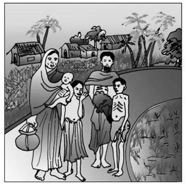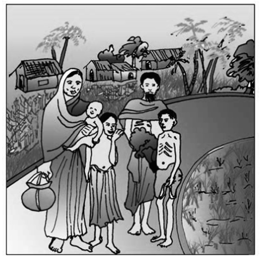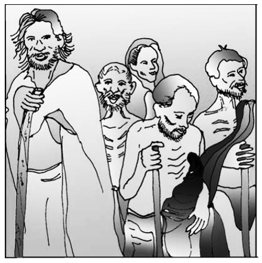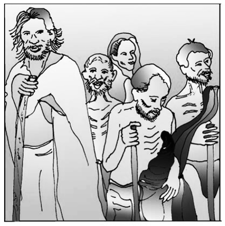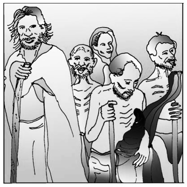The concept of ‘entitlements’ was given by (Amartya Sen/Alfred Marshall).
Important Questions on Food Security in India
A family of four members in Delhi was settled in a slum and earning enough income to lead a subsistence life. They were migrants from a Bihar village in search of employment. During the COVID lockdown, they managed to be in Delhi with the support of philanthropists and the local government. However, they decided to go back to Bihar. They had enough money to buy food for another ten days. The family decided to travel to Bihar by walk or through whatever transport service they could get. During that travel, the family had to stop in various towns and villages for food and shelter. The family could not get enough food in most of the places because:
(a) restaurants were closed.
(b) in some places, the distribution of food was made only for the local residents.
(c) after nearly ten days to travel, the family did not have enough money to pay for food.
How do you classify these reasons as food insecurity?
I. Landless people always have food insecurity.
II. Those who do not have enough nutritious food are food insecure.
III. Those who have enough food but not the requisite nutrition are food secure.
IV. Those who do not have enough purchasing power to buy sufficient food are food insecure.
Find out what type of help is given to the victims of a natural calamity at a relief camp.
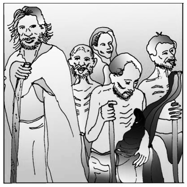
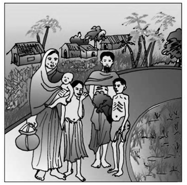
What happens to the supply of food when there is a disaster or a calamity?
OR
How is food security affected during a calamity?
Can you say that the family shown in the picture is a poor family? Why?
What do you see in the picture?
Which year shows a drastic decline in food availability?
|
Year |
Production (Lakh tonnes) |
Imports (Lakh tonnes) |
Exports (Lakh tonnes) |
Total Availability (Lakh tonnes) |
|
- |
- |
|||
|
- |
||||
|
- |
||||
|
- |
||||
|
- |
||||
|
- |
Which age group is seen in the picture?
Can you imagine the source of livelihood of the people, (shown in two pictures) before the occurrence of famine? (In the context of a village).
